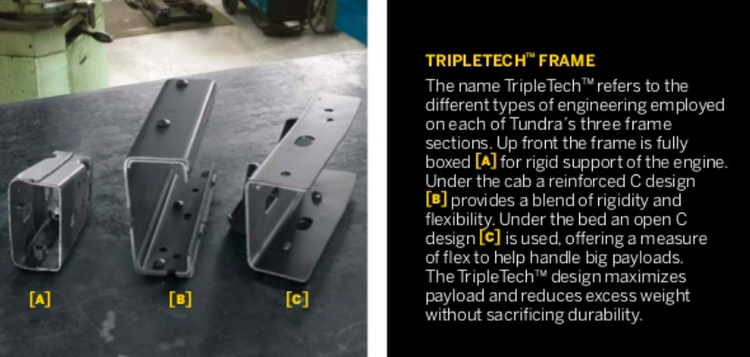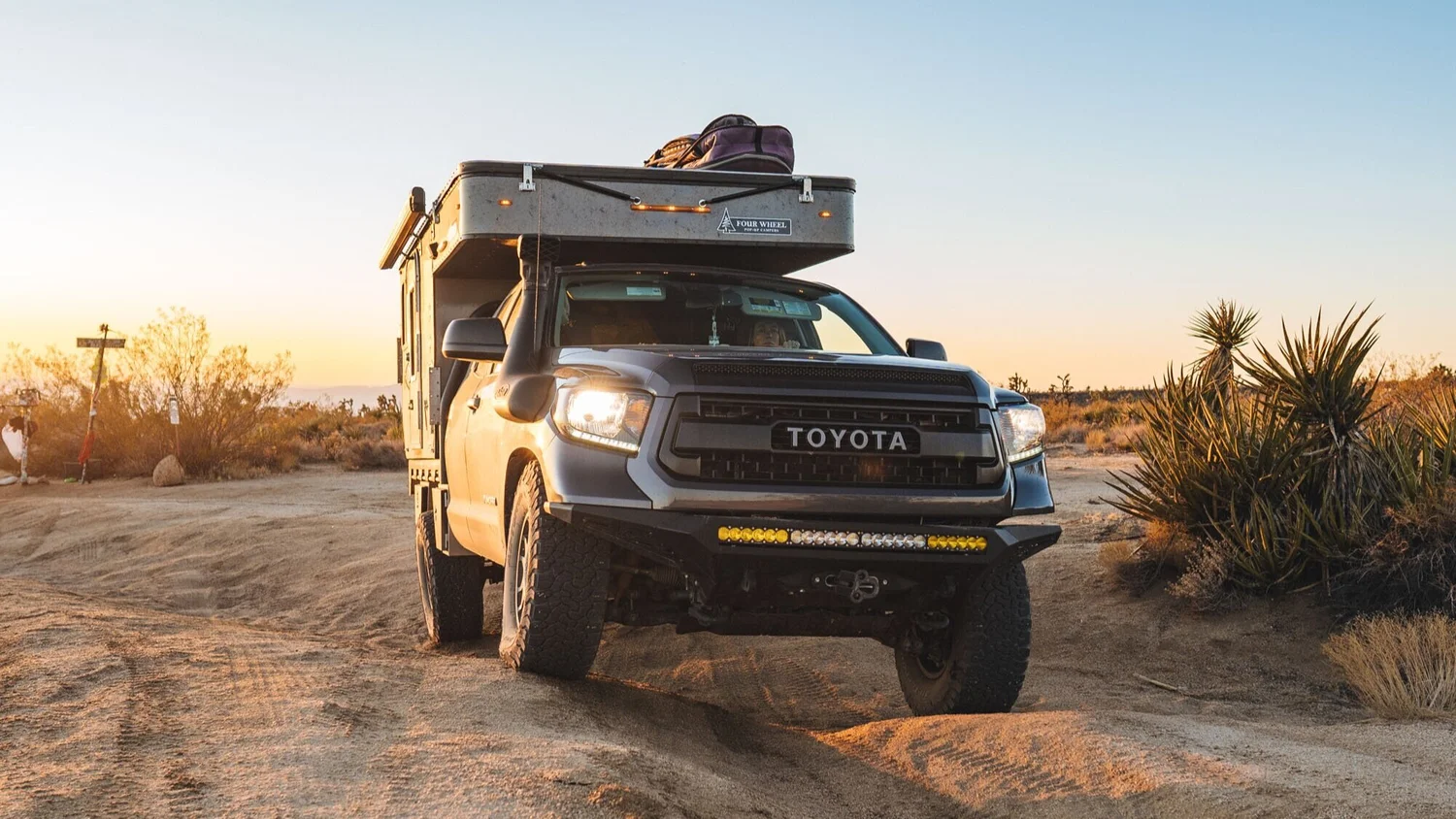My Tundra for one was “fully boxed” from about the front leaf spring perch back and it was C channel right where the cab and bed met. THAT is where it all flexed, and that frame flexes like crazy and would need a torsion free mount FOR SURE
Didn't you tell me your Tundra flatbed+4WC was hard mounted?

The only part of the Tundra frame that's boxed is under the engine. From there to the forward leaf mount it's reinforced C channel, and from that point back it transitions to much wimpier open C. It flexes a fair amount, but not as much as the Fords I've seen with open C frames. Teetering on 2 wheels I can get ~3" of flex from the front to back of my 8ft bed.
Surprisingly everyone I know who puts a flatbed+camper on a Tundra hard mounts it. I guess that works fine if your flatbed+camper is stiff and strong enough to make a solid unit with the frame. But then you lose the "point" of the flexible frame which is to provide some articulation. You can remedy that to a degree with good rear leaf springs that articulate. That will make it sway more on the road... and then if you put a sway bar on to fix that problem, you've reduced articulation again. No free lunch.
These folks don't mention a pivot in their build, and it looks to be hard mounted. Even in that modest ditch, the flatbed+camper has shifted way out of line with the cab... and it is also a very solid unit with no twisting or distortion evident in the camper. Rather all the frame flex is occurring forward of the flatbed. Note the angle of the front bumper relative to the cab.
I'm still dithering on what to do with mine. It won't be hard mounted (I don't have a stiff subframe), and a 3 point pivot would be safest for the camper, but I wonder if a middle ground with soft cab mounts would be best... like these for an older Superduty.
I'd rather have a boxed frame honestly; mount the camper solidly, and deal with articulation via the suspension.











